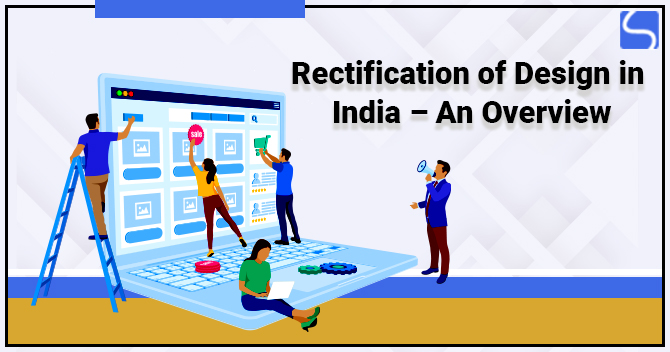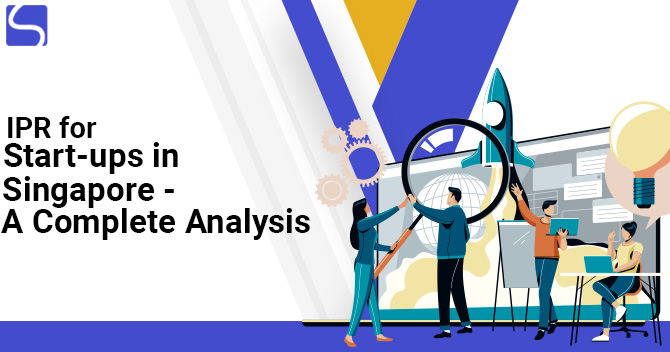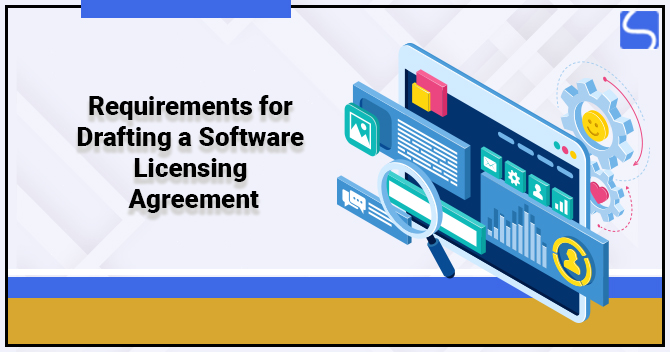Avoidable Common Intellectual Property Errors before Introducing the Website

Karan Singh | Updated: Jun 12, 2021 | Category: Intellectual Property
Facing a cease & desist letter or having a complaint filed against you is never a greeting occurrence. Different resources should be routed away from your business and routed towards fixing the argument or rebranding. A diffident investment in Intellectual Property Diligence work before launching a website can help you avoid the given Intellectual Property Errors.
Table of Contents
An Overview of Intellectual Property
Before we discuss the common intellectual Property Errors, let us first understand the meaning of Intellectual Property and its types. Intellectual Property (IP) is an extensive categorical description for the set of intangible assets owned & lawfully safeguarded by an entity or a company from outside implementation or use without approval. An intangible asset is a non-physical asset that a company owns.
The idea of Intellectual Property (IP[1]) concerning the fact that some products of human intelligence should be afforded similar protective rights that applies to physical properties, which are called tangible assets. Most developed economies have lawful merits in place to safeguard both property forms.
Before knowing the common Intellectual Property Errors, you should know the four basic types of Intellectual Property Protection, and you can check the same below:
- Trade Secrets: It refers to particular, private information that is essential to a business because it provides the business with an ambitious advantage in its market. If this Intellectual Property is obtained by another company, it could damage the original owner. Some examples of Trade Secrets comprise recipes for convinced foods & beverages (such as Sprite), software, new inventions, processes, etc.
- Patents: It is an cfor an inventor that is generally granted by a Government agency. The Patent permits the inventor exclusive protection rights to the unique invention, which could be a process, physical machines like the machine, or a design. Software & technology entities often have Patents for their designs.
- Copyrights: It delivers the creators or authors of actual material the exclusive right to copy, use or supplicate their material. Books’ authors have their work copyrights, and musical artists have their musical work copyrighted. It also defines that the actual creators can grant anyone certification via a licensing agreement to use the work.
- Trademarks: It is a logo, phrase, name, or word identifying and representing a product that legally separates it from other products. A Trademark is assigned to an entity, meaning the entity owns the Trademark so that no others may use or copy it.
Intellectual Property Errors That You Should Avoid

- Violating Trademark Rights of Others
Issue: This is one of the most ordinary Intellectual Property Errors dedicated by the individual. You have selected a Trademark or brand name for your brand site or product and spent money on preparing marketing materials and content around the brand. And all of a rapid, you came across a cease & desist letter representing that you are violating someone else Trademark rights. You were left with 2 options in this challenging condition: either choose a rebranding plan or file a case against the sender.
Solution:
- Run first searches on the Government database to see if anyone is already using the identical name for associated offerings. While implementing such an action, the thing concerning what you predict your firm doing in the next couple of years and make sure one is dominating a similar space.
- Before you are invested in the branding too, choose some apt individuals & conduct in-depth diligence.
- If you do not find anyone using a regarding mark, take advice from a Trademark Attorney who has the experienced to estimate any possible risk. This may cost you some thousands of rupees; however, it is an improved investment considering the harms that might be incurred from unintentional violation.
- Failing to Establish Coordination between Trademark Adoption and New Registrations
Issue: You have selected and apply for registration of a mark. However, when you approach the domain name provider, you find out that the corresponding name is already taken. If the proprietor came to know that you are eager to establish an online business with a similar name, the proprietor would likely grab it in the first place despite its price. Or, under another case, you pay lots of money for a domain name only to recognise that it is lawful unenforceable or not available in India.
Solution: Establish coordination between your filing time and disclosure of your designated name with your acquire of domain names to ensure that both are reasonable and accessible for the name you opt for your home nation and any other nations where you aim to operate.
- Choosing a Legally Unenforceable Name
Issue: You have selected and using a brand name only to find that it cannot be safeguarded, registered, or enforced. If you have not opted for an enforceable name and registered it as a Trademark. You might find it too challenging to dishearten another company entity from using the same mark or claiming damages.
Solution: After selecting the name, file to safeguard it as a Trademark. The Government Registration offers benefits that comprise the right to seek damages & a presumption of proprietorship. It also performs as a shield for the Trademark or brand name so that others cannot use it at their determination. Make sure the Trademark Registration application encompasses all the goods and services you expect to provide within the future time. Apply in other countries where you wish to operate. Once the Trademark Registration is done, implement your rights to it. If you see other companies using a recognisable mark for a similar product, take advice from the Trademark lawyer.
- Use of Copied Content
Issue: In designing the brand site, you take content from various sites. This may activate the Copyright issue because you have selected the content with the approval of the owner. In such situations, the owner may request you to pay penalties against the damages.
Solution:
- Ensure you have the owner’s consent before publishing the content on your website.
- Avoid copy or pasting content or imitating from others without written approval.
- Prefer posting original content as it’s the best way to keep such threats at bay.
Always remember that using the name or showing people’s faces to advertise your website may violate those individual’s right to publicity. Ensure that you have an agreement in place with a concerned content provider/developer. This comprises consultants or contractors selected to create work assign the Copyright to you.
- Making Non-Legit Marketing Claims
Issue: In advertising your new offering, you may claim on your online site regarding it based on incomplete & non-legit details. The claims might also set up a difference between your product and others. The opponents in such conditions take this as an offence and file a complaint about false advertising.
Solution:
- Ensure that the claims you make true to your information & backed by legitimate evidence.
- Ensure you have documents and supporting materials in place.
- Use a presumed party company to conducts analysis and any scientific tests.
Be vigilant when making claims concerning rival products. While comparative marketing is not an offence in India, it should comply with prevailing Trademark and advertising laws. While such practices can be very efficient, it is hazardous because it will be under the range of competitors. Also, be alert about your competitor’s Trademarks. For example, don’t use their registered mark, logos, or name in any manner that suggests a connection with you that does not exist.
Conclusion – Intellectual Property Errors
The online marketplace is a strong business background for those who desire to make a good amount of money with lower investment. However, the competition in this domain is rising quickly, and so are the incidents of unfair business practices. The Intellectual Property Errors incident is prevalent in this domain. Every year many companies encounter pricey lawsuits and finish up by paying heavy penalties to the applicant.
Read our article:Recognise Your Suitable Class for Trademark Registration














